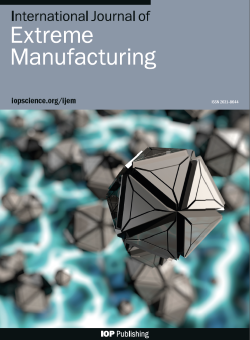三电传感器的整体和局部制备方法:原理、应用和前景
IF 16.1
1区 工程技术
Q1 ENGINEERING, MANUFACTURING
引用次数: 0
摘要
随着智能终端的到来,三电纳米发生器(TENGs)作为一种新型能量转换器,被认为是下一代智能电子产品最重要的技术之一。作为一种自供电传感器,它能将外部机械能转化为电能,从而大大降低整个传感系统的功耗。然而,三电传感器的制造方法在很大程度上决定了其功能和性能。本综述概述了用于制造三电传感器的各种方法,重点介绍了微机电系统(MEMS)技术、三维(3D)打印、纺织方法、模板辅助方法和材料合成制造方法。概述了各种方法的工作机理和合适的应用场景。随后,总结了各种方法的优缺点,并为这些方法的后续应用提供了参考方案。最后,讨论了不同方法面临的机遇和挑战,以及它们在物联网(IoT)中各种智能系统中的应用潜力。本文章由计算机程序翻译,如有差异,请以英文原文为准。
Holistic and localized preparation methods for triboelectric sensors: principles, applications and perspectives
With the arrival of intelligent terminals, triboelectric nanogenerators (TENGs), as a new kind of energy converter, are considered one of the most important technologies for the next generation of intelligent electronics. As a self-powered sensor, it can greatly reduce the power consumption of the entire sensing system by transforming external mechanical energy to electricity. However, the fabrication method of triboelectric sensors largely determines their functionality and performance. This review provides an overview of various methods used to fabricate triboelectric sensors, with a focus on the processes of micro-electro-mechanical systems (MEMS) technology, three-dimensional (3D) printing, textile methods, template-assisted methods, and material synthesis methods for manufacturing. The working mechanisms and suitable application scenarios of various methods are outlined. Subsequently, the advantages and disadvantages of various methods are summarized, and reference schemes for the subsequent application of these methods are included. Finally, the opportunities and challenges faced by different methods are discussed, as well as their potential for application in various intelligent systems in the Internet of Things (IoT).
求助全文
通过发布文献求助,成功后即可免费获取论文全文。
去求助
来源期刊

International Journal of Extreme Manufacturing
Engineering-Industrial and Manufacturing Engineering
CiteScore
17.70
自引率
6.10%
发文量
83
审稿时长
12 weeks
期刊介绍:
The International Journal of Extreme Manufacturing (IJEM) focuses on publishing original articles and reviews related to the science and technology of manufacturing functional devices and systems with extreme dimensions and/or extreme functionalities. The journal covers a wide range of topics, from fundamental science to cutting-edge technologies that push the boundaries of currently known theories, methods, scales, environments, and performance. Extreme manufacturing encompasses various aspects such as manufacturing with extremely high energy density, ultrahigh precision, extremely small spatial and temporal scales, extremely intensive fields, and giant systems with extreme complexity and several factors. It encompasses multiple disciplines, including machinery, materials, optics, physics, chemistry, mechanics, and mathematics. The journal is interested in theories, processes, metrology, characterization, equipment, conditions, and system integration in extreme manufacturing. Additionally, it covers materials, structures, and devices with extreme functionalities.
 求助内容:
求助内容: 应助结果提醒方式:
应助结果提醒方式:


